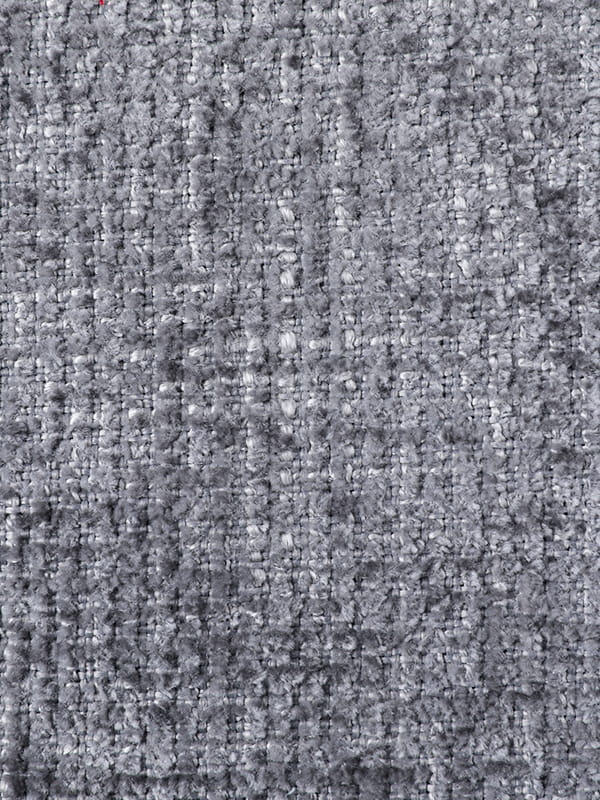3D cross check sofa chenille fabric is a premium upholstery material characterized by its three-dimensional cross-check pattern, combining both aesthetic appeal and functional durability. Unlike traditional flat chenille fabrics, it employs a specialized weaving technique that creates textured, raised patterns on the surface, giving the furniture a richer visual depth and sophisticated tactile experience. Depending on lighting and angle, the three-dimensional weave casts subtle shadows and highlights, enhancing the elegance of living spaces. The material is typically made from high-density yarns, ensuring longevity and resistance to deformation, pilling, or uneven wear. Its soft, plush texture provides a comfortable seating experience, making it suitable for a wide variety of home environments.
One of the most remarkable advantages of 3D cross check chenille fabric is its visual sophistication. The raised cross-check design adds dimensionality to sofas, making them a central focus in any interior. This material seamlessly adapts to diverse design styles including modern minimalism, Scandinavian simplicity, and classic luxury. Beyond aesthetics, the tactile comfort of the fabric is another significant benefit. Its soft hand feel, moderate thickness, and elasticity ensure a relaxing experience whether used in living rooms, lounges, or reading nooks. Durability is equally notable: high-density yarns and precise weaving techniques ensure resistance to daily wear and tear, maintaining both shape and appearance over time. Additionally, carefully engineered breathability allows the fabric to remain comfortable even in warmer climates, preventing the sensation of stickiness or heat buildup.
Choosing the appropriate 3D cross check chenille fabric requires consideration of several factors. Color selection and pattern density should complement the overall interior design, providing visual harmony without overpowering the room. Fabric thickness and texture must strike a balance between comfort and resilience; overly thick yarn may reduce softness, while overly thin yarn may compromise durability. The intended usage and placement of the sofa should guide fabric choice: high-traffic living areas require robust, easy-to-clean materials, whereas private spaces like bedrooms or lounges may favor luxurious textures and decorative appeal. Evaluating the maintenance requirements is equally important, ensuring that long-term cleaning and upkeep are manageable without compromising quality or aesthetics.
To preserve the appearance and lifespan of 3D cross check chenille fabric, regular maintenance is essential. Routine vacuuming removes dust and small particles that could abrade the fibers. Liquid spills should be promptly blotted with a clean cloth, followed by spot cleaning with neutral or fabric-appropriate cleaners. Harsh chemicals, bleach, and strong acids or alkalis must be avoided as they can damage the fibers. For deeper cleaning, professional services are recommended to ensure the three-dimensional texture is preserved. Prolonged exposure to direct sunlight should be minimized to prevent fading or fiber degradation. Rotating cushions and seat pads periodically also helps to distribute wear evenly, extending the material’s usability.
The versatility of 3D cross check sofa chenille fabric allows it to suit multiple interior applications. In contemporary living rooms, it can serve as a statement piece that elevates the overall style. In classic or luxury settings, it complements wood or metallic accents, enhancing texture contrast and sophistication. Designers often combine it with neutral tones or accent colors to highlight the three-dimensional weave, creating a visual focal point without overwhelming other elements. Beyond living rooms, this fabric is ideal for lounges, offices, boutique hotels, and even high-end public spaces where tactile comfort and refined aesthetics are equally valued. Its adaptability makes it suitable for both bold design statements and subtle, understated elegance.
From a scientific standpoint, 3D cross check chenille fabric possesses remarkable properties. High-density polyester or blended yarns provide both tensile strength and flexibility, allowing the weave to maintain its three-dimensional structure. The cross-check pattern disperses stress evenly across the fabric surface, reducing wear and deformation over time. Advanced dyeing techniques ensure colorfastness, preventing fading even with prolonged sunlight exposure. Breathability, moisture absorption, and thermal regulation are optimized to provide comfort under various environmental conditions. Additionally, many modern chenille fabrics are treated with anti-static and anti-microbial coatings, further enhancing their practical performance in daily use.
The market for 3D cross check chenille fabric has expanded significantly as consumers increasingly prioritize both aesthetic and functional qualities in furniture. Designers and manufacturers are experimenting with novel textures, color gradients, and eco-friendly materials to appeal to evolving tastes. Sustainability has become a major driver, with many fabrics now produced using recycled or low-impact fibers and non-toxic treatments. Consumer preference shows growing interest in materials that are visually striking yet easy to maintain, combining luxury appearance with practical usability. In response, the industry is innovating with hybrid yarns, advanced weaving patterns, and multi-layered fabrics to offer enhanced durability, tactile richness, and environmental responsibility.
Despite its advantages, 3D cross check chenille fabric presents some challenges. Its complex weave can be more difficult to clean compared to flat fabrics, requiring careful maintenance to preserve texture. Certain color patterns may show dirt or stains more readily, making preventive care essential. Furthermore, high-end variants may be costlier due to material quality and weaving complexity, necessitating careful budgeting. When selecting this fabric, buyers should evaluate trade-offs between appearance, comfort, durability, and ease of maintenance to ensure optimal long-term satisfaction.
Looking ahead, 3D cross check chenille fabric is expected to evolve in response to technological advancements and consumer demands. Innovations in yarn engineering, sustainable production methods, and weaving techniques will likely produce fabrics that are even more durable, environmentally friendly, and visually engaging. Designers may experiment with dynamic patterns that interact with light and texture to create immersive visual experiences. Additionally, integration with smart fabrics and responsive materials could enable future upholstery that adjusts its comfort, temperature, or appearance based on user needs. These developments suggest a long-term growth trajectory for 3D cross check chenille fabric as a premium, multifunctional, and aesthetically versatile material.
